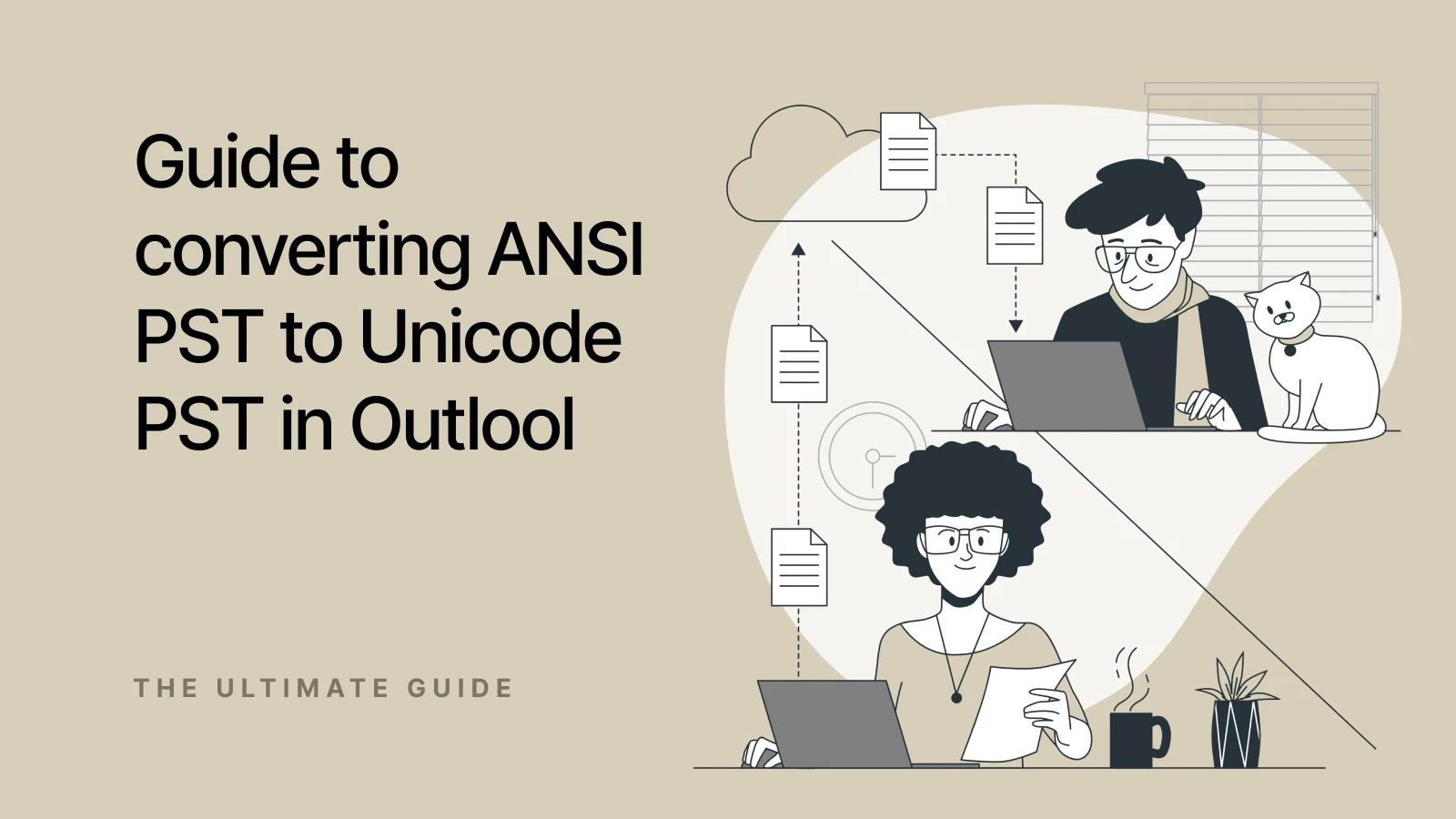Seamless compatibility often dictates the efficiency of our interactions. Outlook, a widely used email client, employs two distinct formats – ANSI and Unicode – for its Personal Storage Table (PST) files. The transition from ANSI to Unicode is vital for accommodating modern communication needs, including larger mailbox sizes and improved data integrity.
Understanding ANSI and Unicode
Before delving into the conversion process, it’s essential to grasp the differences between ANSI and Unicode PST formats. ANSI, an older format, has limitations on mailbox size and character support, potentially leading to issues with data integrity and communication efficiency. In contrast, Unicode offers expanded mailbox sizes, improved support for characters from various languages, and enhanced data organization.
Determine ANSI Format
To initiate the transition, it’s crucial to determine whether your existing PST file is in the ANSI format. This information provides the foundation for a smooth conversion process. In Outlook, access your mailbox properties by right-clicking on your PST file and selecting “Data File Properties.” Navigate to the “General” tab, where you’ll find information about the PST format. If the file is labeled as ANSI, the transition to Unicode becomes a priority.
Back-Up Your Data
Before embarking on any significant data conversion, safeguarding your valuable communication history is paramount. Create a backup of your existing ANSI PST file to ensure that no data is lost during the conversion process. This step guarantees a safety net in case any unexpected issues arise.
Create a New Unicode PST
To transition from ANSI to Unicode, you’ll need to create a new PST file within your Outlook application. This new file will serve as the destination for the converted file. In Outlook, navigate to the “File” menu, select “New,” and then choose “Outlook Data File.” Opt for the Unicode format when prompted. Assign a name and location for the new PST, and a fresh canvas for your converted data will be ready.
Exporting from ANSI to Unicode
With your new PST file prepared, it’s time to embark on the process of exporting data from the ANSI PST and importing it into the Unicode one. Begin by selecting the file you want to transfer. This could include emails, contacts, calendars, and other components within your Outlook profile.
Exporting ANSI Data
In Outlook, navigate to the “File” menu and choose “Open & Export.” Select “Import/Export” to open the Import and Export Wizard. Opt for “Export to a file” and proceed to the next step. Choose the ANSI PST file you wish to export from and select the specific data components you want to migrate. In the wizard, select your newly created Unicode PST file as the destination.
Ensuring Data Integrity
During the export process, you’ll be prompted to map fields between your ANSI and Unicode PST files. This step ensures that the data structure remains consistent after the conversion. Carefully review and adjust the field mappings as needed to guarantee data integrity.
Completing the Export
Once you’ve mapped the fields, proceed with the export process. For example, the Outlooktransfer program will guide you through the steps, transferring the selected file components from the ANSI PST to the Unicode PST. The duration of this process depends on the volume of data being transferred.
Verifying Data
After the export is complete, it’s prudent to verify the data within your new Unicode PST. Open your Unicode PST in Outlook and navigate through the folders to confirm that all transferred data is intact. This step provides peace of mind and ensures that your communication history remains intact and accessible.
Enhanced Outlook Experience
With your transition from ANSI to Unicode successfully completed, you’re ready to embrace the enhanced capabilities and benefits of the Unicode format. The increased mailbox size, improved character support, and optimized data integrity contribute to a more efficient and effective Outlook experience. Whether you’re managing work emails or personal correspondence, the transition to Unicode sets the stage for seamless communication.
Your Outlook experience will be elevated, thanks to the increased mailbox size, improved character support, and overall enhanced data organization. As you navigate the transition, remember that the Unicode era offers you the tools to communicate and collaborate with confidence and ease.
